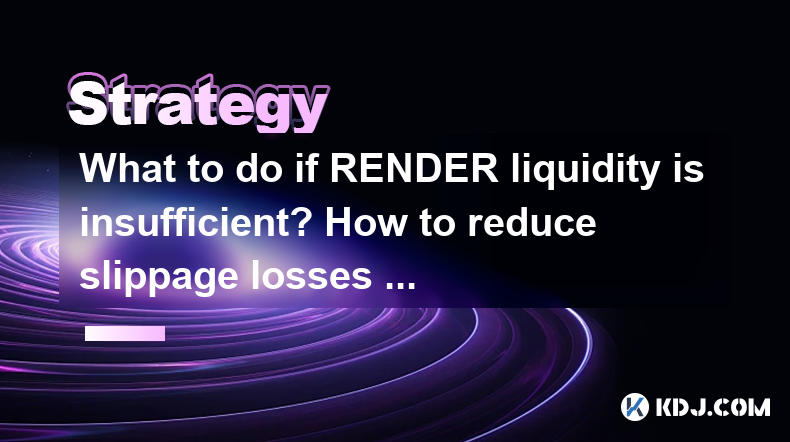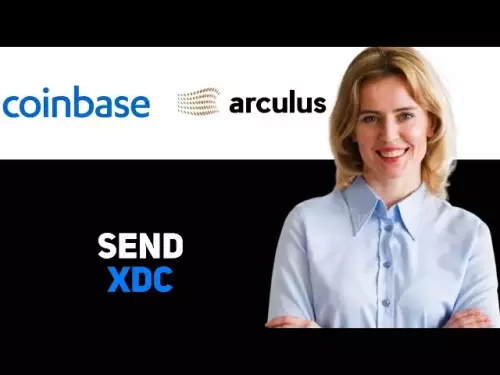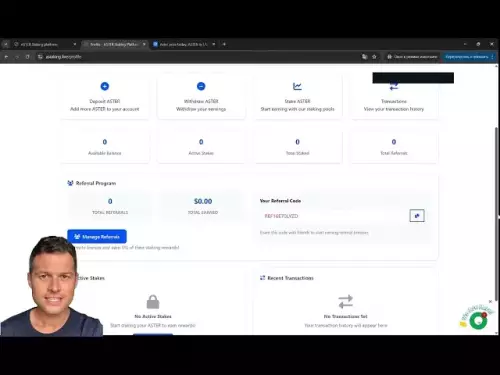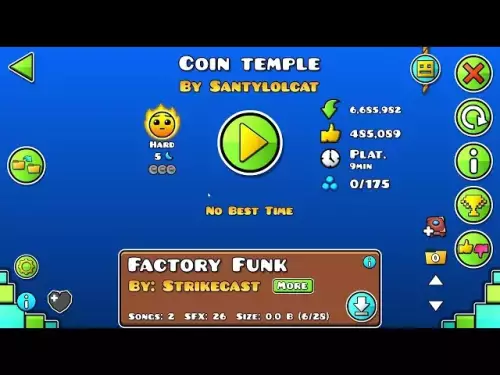-
 bitcoin
bitcoin $111375.742210 USD
-8.60% -
 ethereum
ethereum $3780.311592 USD
-13.98% -
 tether
tether $1.001299 USD
0.07% -
 bnb
bnb $1093.375857 USD
-13.01% -
 xrp
xrp $2.339375 USD
-16.91% -
 solana
solana $185.029017 USD
-16.69% -
 usd-coin
usd-coin $1.000230 USD
0.04% -
 tron
tron $0.319531 USD
-5.16% -
 dogecoin
dogecoin $0.190791 USD
-23.59% -
 cardano
cardano $0.638663 USD
-21.82% -
 ethena-usde
ethena-usde $0.998483 USD
-0.20% -
 hyperliquid
hyperliquid $37.741486 USD
-14.68% -
 chainlink
chainlink $17.229851 USD
-22.17% -
 stellar
stellar $0.316546 USD
-16.74% -
 bitcoin-cash
bitcoin-cash $507.861193 USD
-13.18%
What to do if RENDER liquidity is insufficient? How to reduce slippage losses in large transactions?
To minimize slippage with RENDER tokens, check liquidity on DEXs, use limit orders, break large orders into smaller ones, and trade during high liquidity periods.
May 02, 2025 at 03:09 am

If you are dealing with insufficient liquidity for RENDER tokens and looking to minimize slippage losses during large transactions, there are several strategies you can employ. Understanding these techniques can help you navigate the often volatile and complex world of cryptocurrency trading more effectively.
Understanding Liquidity and Slippage
Liquidity refers to the ease with which an asset can be bought or sold in the market without affecting its price significantly. In the context of RENDER tokens, liquidity is crucial for ensuring smooth transactions. Slippage, on the other hand, is the difference between the expected price of a trade and the price at which the trade is executed. High slippage can lead to significant losses, especially in large transactions.
When liquidity for RENDER tokens is low, the price can be more volatile, leading to higher slippage. Therefore, it's important to understand how to manage these factors to execute trades more efficiently.
Checking RENDER Token Liquidity
Before executing any transaction, it's essential to check the current liquidity of RENDER tokens. You can do this by:
- Visiting a decentralized exchange (DEX) like Uniswap or SushiSwap: These platforms often provide real-time data on liquidity pools. Look for the RENDER token pair you are interested in and check the liquidity depth.
- Using liquidity aggregation tools: Tools like 1inch or Matcha aggregate liquidity from multiple sources, giving you a broader view of the available liquidity.
- Checking token analytics platforms: Websites like CoinGecko or CoinMarketCap often provide insights into liquidity and trading volumes for various tokens.
By understanding the current liquidity, you can better plan your transactions to minimize potential slippage.
Strategies to Increase RENDER Liquidity
If you find that the liquidity for RENDER tokens is insufficient, there are several steps you can take to improve it:
- Provide liquidity yourself: By adding RENDER tokens and the paired asset (e.g., ETH) to a liquidity pool, you can help increase the overall liquidity. This can be done on platforms like Uniswap by:
- Connecting your wallet to the DEX.
- Selecting the RENDER token pair you want to provide liquidity for.
- Entering the amount of RENDER and the paired asset you wish to add.
- Confirming the transaction.
- Encourage others to provide liquidity: You can do this by promoting the token on social media, forums, or through token incentives like liquidity mining programs.
- Use liquidity aggregation services: These services can help you find better liquidity across multiple platforms, potentially reducing the impact of low liquidity on your trades.
Reducing Slippage in Large Transactions
To minimize slippage when dealing with large transactions of RENDER tokens, consider the following strategies:
- Use limit orders: Instead of using market orders, which can lead to high slippage, use limit orders to set the maximum price you're willing to pay or the minimum price you're willing to accept. This can help you control the execution price of your trade.
- Break up large orders: Instead of executing one large transaction, break it into smaller orders. This can help reduce the impact on the market price and minimize slippage. For example:
- If you want to buy 10,000 RENDER tokens, you could break this into 10 orders of 1,000 tokens each.
- Monitor the market and execute these smaller orders at optimal times.
- Trade during high liquidity periods: Liquidity tends to be higher during certain times of the day or week. Monitor trading volumes and execute your transactions when liquidity is at its peak to minimize slippage.
- Use slippage tolerance settings: Many DEXs allow you to set a slippage tolerance. By setting a lower tolerance, you can ensure that your trade only executes if the slippage is within an acceptable range. For example:
- On Uniswap, you can set the slippage tolerance in the transaction settings.
- A common setting might be 1-2%, but you can adjust this based on your risk tolerance.
Monitoring and Adjusting Your Strategy
After implementing these strategies, it's important to continuously monitor the market and adjust your approach as needed. Keep an eye on liquidity levels, trading volumes, and any changes in the RENDER token's market dynamics.
- Use trading bots: Automated trading bots can help you execute trades at optimal times and manage your orders more efficiently. They can be programmed to break up large orders and execute them when liquidity is highest.
- Stay informed: Follow RENDER token-related news and developments, as these can impact liquidity and market conditions. Joining communities and forums can also provide valuable insights from other traders.
Frequently Asked Questions
Q: Can I increase RENDER liquidity by buying more tokens?A: Buying more RENDER tokens alone does not increase liquidity. To increase liquidity, you need to add both RENDER tokens and the paired asset to a liquidity pool on a DEX.
Q: How does the time of day affect RENDER token liquidity?A: Liquidity can vary throughout the day, often being higher during peak trading hours when more traders are active. This typically aligns with major market opening times, such as the start of trading in major financial centers.
Q: Is it better to trade RENDER tokens on a centralized exchange or a DEX to reduce slippage?A: It depends on the specific conditions. Centralized exchanges often have higher liquidity, which can reduce slippage. However, DEXs offer more control over your trades and can be better for managing slippage through limit orders and liquidity aggregation tools.
Q: What is the impact of gas fees on slippage when trading RENDER tokens?A: High gas fees can indirectly affect slippage by making transactions more expensive, which might lead traders to use lower slippage tolerance settings or break up orders to manage costs. However, gas fees themselves do not directly cause slippage.
Disclaimer:info@kdj.com
The information provided is not trading advice. kdj.com does not assume any responsibility for any investments made based on the information provided in this article. Cryptocurrencies are highly volatile and it is highly recommended that you invest with caution after thorough research!
If you believe that the content used on this website infringes your copyright, please contact us immediately (info@kdj.com) and we will delete it promptly.
- Bittensor (TAO): Super Bullish Signals Point to Potential 2x Rally
- 2025-10-11 10:25:12
- Silver Price Correction: Navigating the Dip & Identifying Key SEO Keywords
- 2025-10-11 10:25:12
- MoonBull: The Crypto Meme Coin Promising 1000x Gains?
- 2025-10-11 10:30:01
- Crypto Payroll Revolution: Stablecoins, Altcoins, and the Future of Salary Payments
- 2025-10-11 10:30:01
- Decoding Crypto Trends: XRP's Bitcoin Dream, BlockDAG's Rise, and the PayFi Revolution
- 2025-10-11 10:30:01
- Amina Bank & Polygon: Institutional Staking with a Sweet 15% Yield
- 2025-10-11 10:30:15
Related knowledge

Practical parameter settings for a Bitcoin multi-timeframe moving average system
Sep 18,2025 at 10:54pm
Optimizing Timeframe Combinations for Bitcoin Trading1. Selecting appropriate timeframes is crucial when building a multi-timeframe moving average sys...

How can I filter out false breakouts in Dogecoin high-frequency trading?
Sep 22,2025 at 01:00am
Understanding False Breakouts in Dogecoin Trading1. A false breakout occurs when Dogecoin's price appears to move beyond a defined support or resistan...

Techniques for identifying tops and bottoms in the Bitcoin on-chain NVT model
Sep 20,2025 at 07:54pm
Understanding the NVT Model in Bitcoin Analysis1. The Network Value to Transactions (NVT) ratio is often described as the 'P/E ratio' of the cryptocur...

What does the surge in open interest in Bitcoincoin futures mean?
Sep 20,2025 at 11:18pm
Understanding the Surge in Dogecoin Futures Open Interest1. A surge in open interest within Dogecoin futures indicates a growing number of active cont...

How can I use the Ethereum USDT premium to gauge market sentiment?
Sep 18,2025 at 11:55pm
Understanding the Ethereum USDT Premium1. The Ethereum USDT premium refers to the price difference between USDT (Tether) traded on Ethereum-based plat...

What should I do if Ethereum staking yields decline?
Sep 20,2025 at 06:18am
Understanding the Causes Behind Declining Ethereum Staking Yields1. The Ethereum network transitioned to a proof-of-stake consensus mechanism with the...

Practical parameter settings for a Bitcoin multi-timeframe moving average system
Sep 18,2025 at 10:54pm
Optimizing Timeframe Combinations for Bitcoin Trading1. Selecting appropriate timeframes is crucial when building a multi-timeframe moving average sys...

How can I filter out false breakouts in Dogecoin high-frequency trading?
Sep 22,2025 at 01:00am
Understanding False Breakouts in Dogecoin Trading1. A false breakout occurs when Dogecoin's price appears to move beyond a defined support or resistan...

Techniques for identifying tops and bottoms in the Bitcoin on-chain NVT model
Sep 20,2025 at 07:54pm
Understanding the NVT Model in Bitcoin Analysis1. The Network Value to Transactions (NVT) ratio is often described as the 'P/E ratio' of the cryptocur...

What does the surge in open interest in Bitcoincoin futures mean?
Sep 20,2025 at 11:18pm
Understanding the Surge in Dogecoin Futures Open Interest1. A surge in open interest within Dogecoin futures indicates a growing number of active cont...

How can I use the Ethereum USDT premium to gauge market sentiment?
Sep 18,2025 at 11:55pm
Understanding the Ethereum USDT Premium1. The Ethereum USDT premium refers to the price difference between USDT (Tether) traded on Ethereum-based plat...

What should I do if Ethereum staking yields decline?
Sep 20,2025 at 06:18am
Understanding the Causes Behind Declining Ethereum Staking Yields1. The Ethereum network transitioned to a proof-of-stake consensus mechanism with the...
See all articles










































































